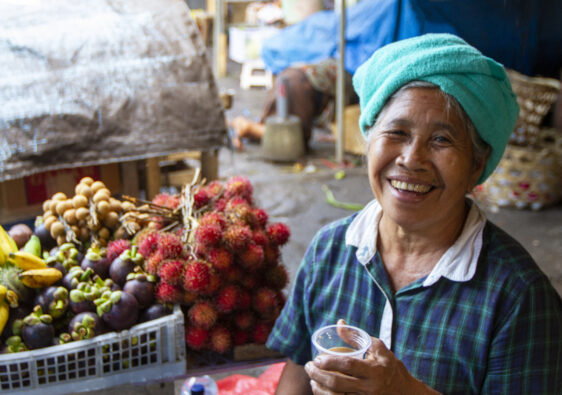‘Things can not be bought; you can only live them.’


A plane, a train, an automobile, and finally, an Aperol Spritz on my balcony overlooking the sea in Santa Maria di Castellabate, a concealed ornament sparkling on the Cilento coast within the province of Salerno, one of the most remote and beautiful parts of Campania, Italy. The Aperol Spritz, a refreshing and iconic Italian cocktail, was the perfect welcome drink to this picturesque location.
Cilento National Park is the second largest park in Italy, stretching some 100 km of rugged coastline. It is dotted with historic villages still engaged in traditional culture spanning hundreds of years.
It has three main areas – Santa Maria, San Marco and Castellabate medieval centre.
During my four-day stay in Santa Maria di Castellabate, my hotel Plaza Gazzetta Florio was just 30 steps away from the beach, with the serene sound of the sea and gentle waves touching my toes each morning. It was a tranquil paradise, perfect for unwinding and relaxation.
Each morning I strolled around the small town that feels more like a roomy village.
This piece of Italy has remained more authentic to its origins and spirit since the beginning of time, or so it feels. The locals, deeply rooted in their traditions, are always ready to share a piece of their culture with visitors, making the experience even more enriching.







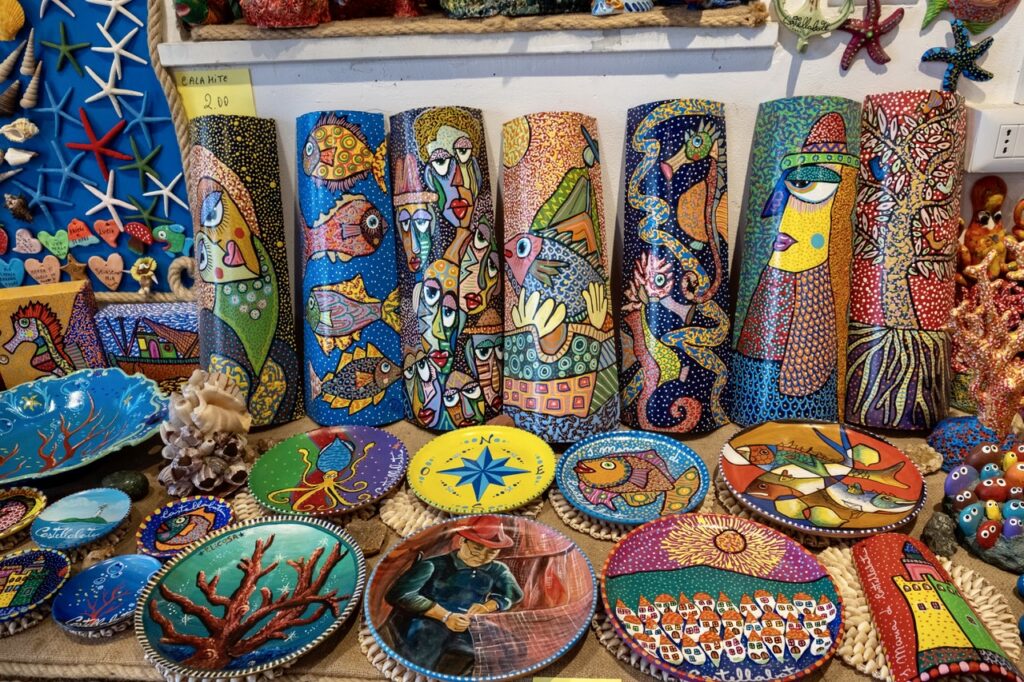









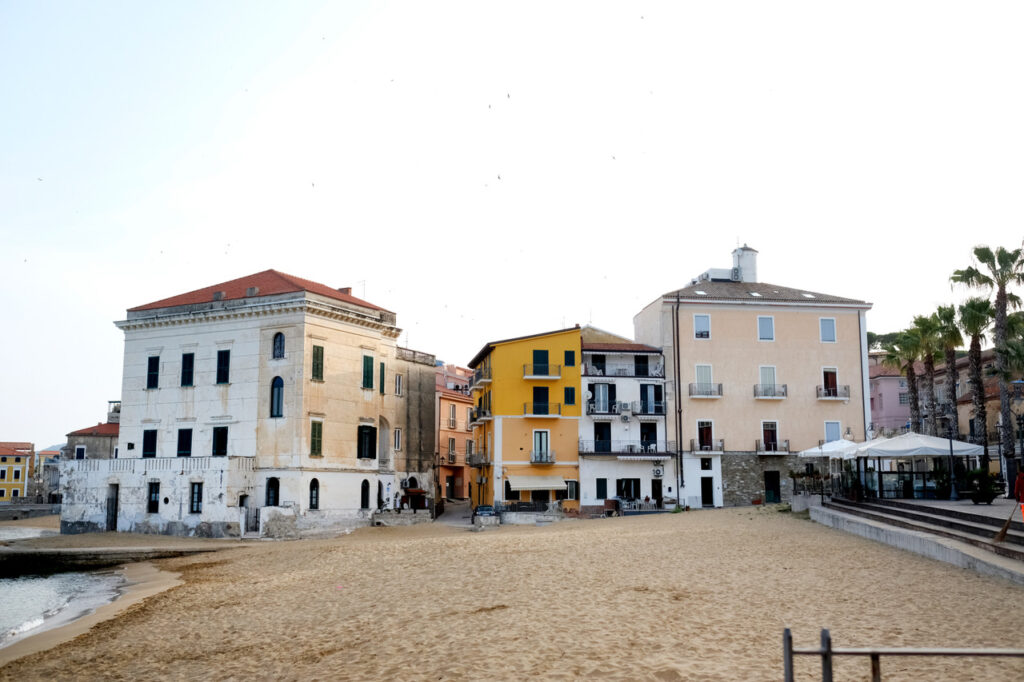


I had breakfast each morning less than a minute’s walk from the hotel in Bar Gelateria L’ancora. Domenico, who runs the bar, has won countless prizes for his gelato, so of course, I called in there in the afternoon, too! It was divine. But I would begin the day with a sumptuous croissant and black coffee. Why does coffee always taste better when you are away, especially in Italy. The more Domenico got to know me, the bigger the ice cream got; more nibbles arrived with my Aperol spritz, which I had in the evening before hitting my pillow. And sometimes, I would pop in at sunset before my evening meal. When I left Castellabate, I felt like I had made new friends among the staff.


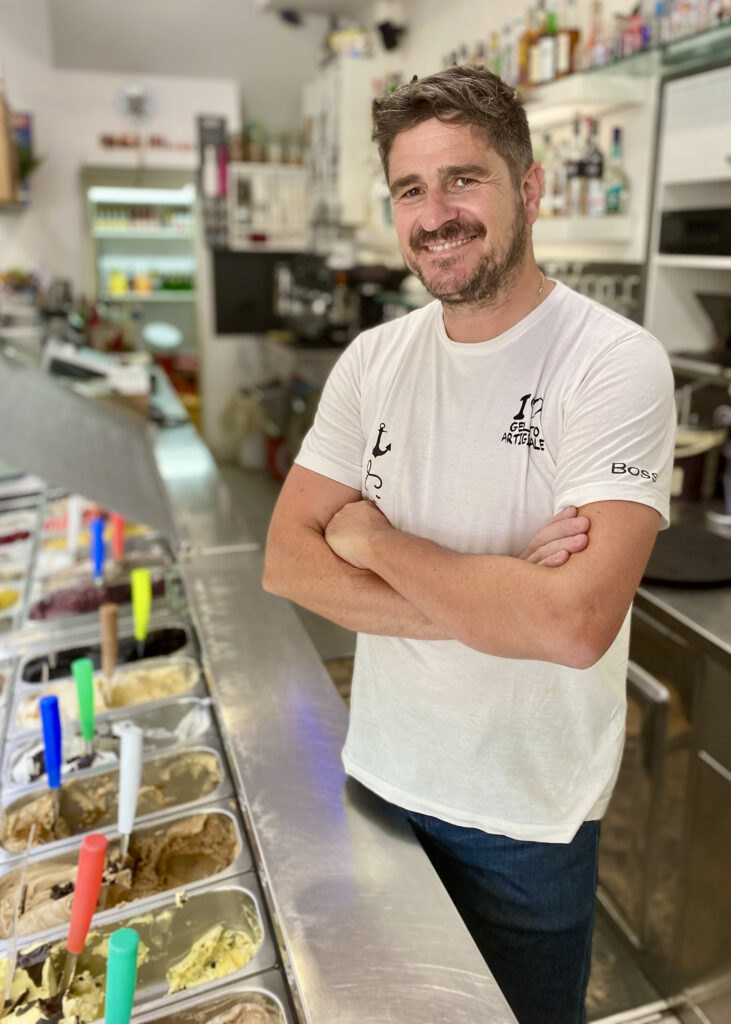



Tourism is not regulated in Castellabate. It’s a working town that welcomes travellers and tourists alike. Prices are low, but the quality of food and wine far exceeds any price. Each time I sat down to eat, my expectations continued to be exceeded; my taste buds were on their own holiday. From fresh seafood to homemade pasta, the local cuisine is a delightful journey for any food lover.
Superlative seafood restaurants spread throughout the township, serving fresh local fish, pasta, and mozzarella—famously known as the finest mozzarella money can buy. Rumours say the Queen of England had it especially flown out to Windsor Castle. It’s made from the milk of water buffalo rather than cows, adding an essence found nowhere else.
Most restaurants in the area offer this premium cheese on their menus, often with a Caprese salad or just a drizzling of olive oil.
I had the most beautiful mozzarella experience with tour guide Nicola Guariglia, who describes himself as a traveller, lover of nature, culture and food and ambassador of Cilento National Park. We drove out of the town to a secret forest and wandered while he spoke about his home. Then, as if out of a dream, the turquoise blue of the sea suddenly appeared, a quiet, surprising delight. I watched him prepare a fresh Caprese salad straight from the heart. He delivers his tour with emotion and says, ‘Things can not be bought; you can only live them’. The salad was delicious, and the surprise of a chilled glass of white wine added a delightful touch to the experience. You can take the tour further by visiting the buffalo farm to watch the cheese being processed. Take a look at Nicola’s website here https://www.masaniellotourist.com/en-gb








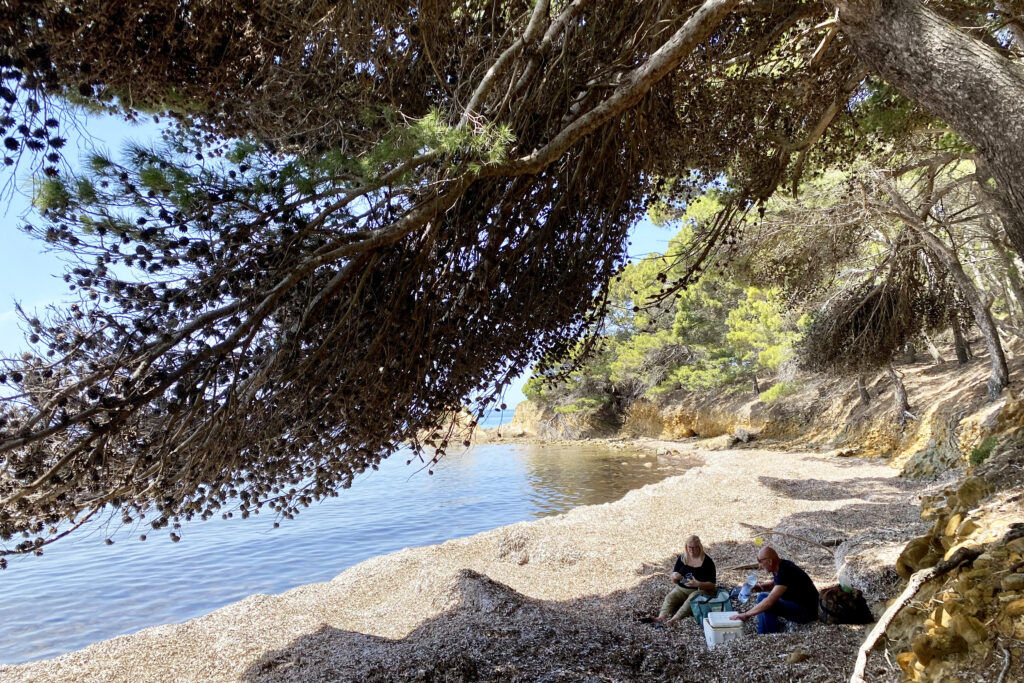


The Paestum temples are about a 45-minute drive from Santa Maria di Castellabate. Located to the south of Salerno in the coastal heart of the Compania, they hide a historical treasure. Ancient buildings, including the temples of Hera, Poseidon, and Athens, date back to the time of the Greek and Roman colonies in the 5th and 7th centuries BC. A necessary visit for any history buff, and the museum is a must, too.

The highlight for me was the medieval village on the hill – Castellabate. I decided to catch the bus from the square in Santa Maria. I always enjoy public transport when I’m away. It’s a great way to try out a little more of my school-day Italian and incredibly affordable – just 1 euro to the top of the hill!
Castellabate, a commune yet to be discovered by the masses, exudes a unique charm. Its cobbled streets, steep stairways leading to shadowy alleyways, and a charming piazza create an enchanting atmosphere. I savoured a glass of wine, observed old men in caps playing dominoes, and gazed at the cliffs plunging into the sea below. It’s a serene and captivating part of the world.
I walked back down to Santa Maria.
It was worth the views on the way—Santa Maria to the right and San Marco perched to the left on the edge of a spectacular seascape of vibrant turquoise, a picture I would have missed taking if I had turned by bus.
San Marco is another hamlet in Castellabate that was developed around the port. Locals claim that Hemingway stayed there when he wrote “The” Old Man and the Sea”. “A busy hub for fishing and trading locally grown products. Filled with good restaurants with a carefree, unhurried ambience.





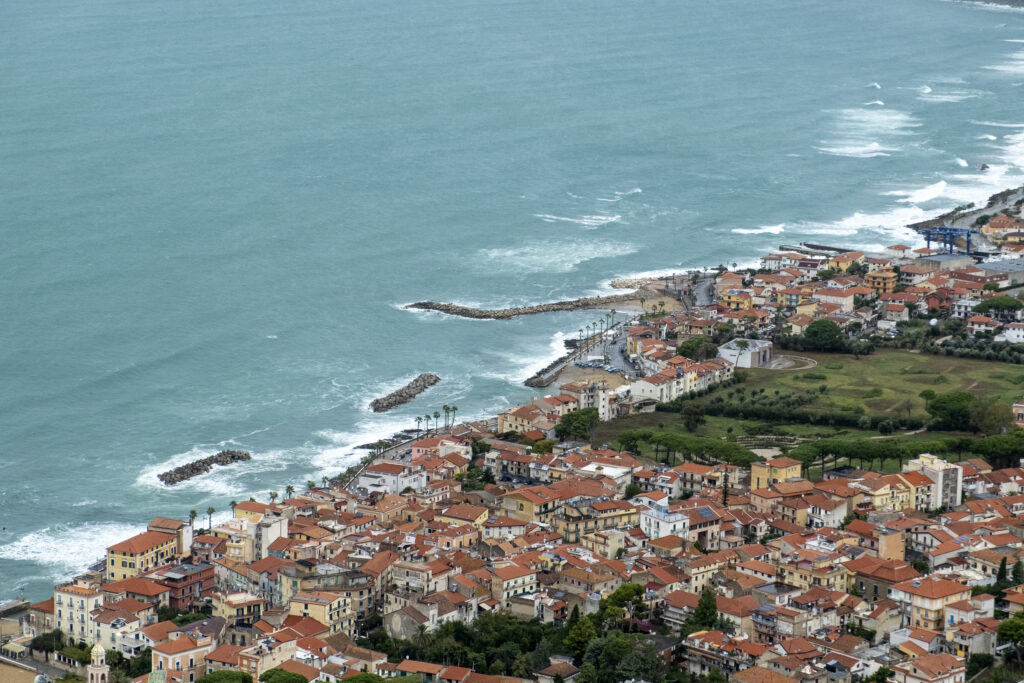
My days would conclude with a leisurely stroll along the seafront in Santa Maria—the evening sun still warm on my back, the inviting ambiance of local bars beckoning with their selection of wines. Once I made my choice, I would settle in and watch the sky transform into a canvas of pink and purple. As night descended, the twinkling lights of the nearby restaurant would guide me back to my apartment.
I met some incredibly amiable people, becoming affectionate as I bumped into the same faces during my time there. The locals welcomed not only me but my camera, too. Their kind nods and warm smiles, when I aimed my camera, spoke volumes and allowed me to capture the local life in all its vibrancy.
Travelling with a partner is a romantic secret hideaway, but if travelling alone, as I did, it’s a safe and welcoming place.
Take a place in the sun, sit, and vacate et scire—with another Aperol spritz.
How to get there:
Fly to Naples, then go to the train station, which is a short bus ride away. The staff at the help desk speak English and will point you in the right direction. Get the train to Agropoli, which costs around 15 euros for the second class and 20 euros for the first. I took a first-class cabin with sockets to charge phones, laptops and good air conditioning. From Agropoli, jump in a taxi to your accommodation unless you have arranged for your host to pick you up. It is another 25 minutes away.
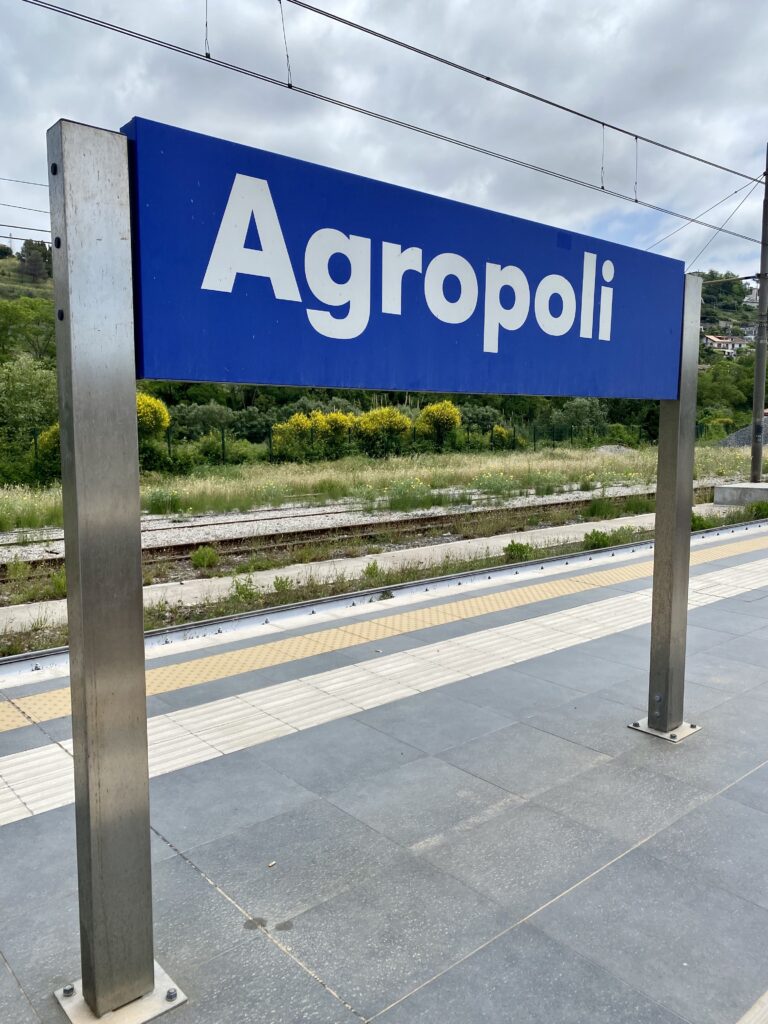

Where to stay:
There are plenty of places to stay, and they are all reasonable, but if you would like a little luxury, look at https://www.palazzettoflorio.com
Situated on the beach with the most helpful host, Carlos. Carlos knows the area like the back of his hand and can help with transfers to and from the airport, as well as hire cars and trips. He will also direct you to some of the best eating places and entertain you with tales of the local Prince, who just so happens to live next door! Prices are between 70 and 200 euros per night based on two sharing.













